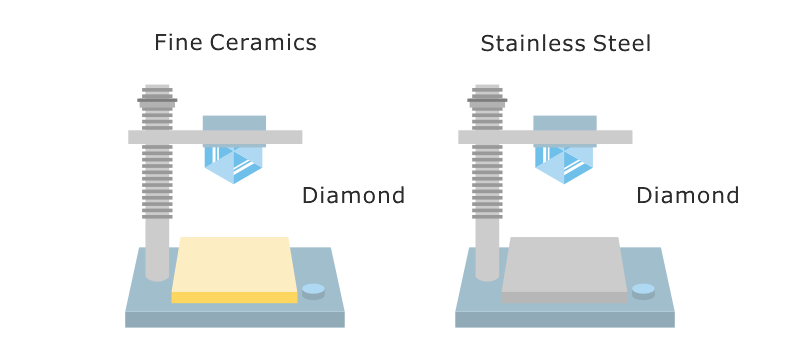They withstand chemical erosion that occurs in other materials subjected to acidic or caustic environments.
Types of ceramics and their properties.
People first started making ceramics thousands of years ago pottery glass and brick are among the oldest human invented materials and we re still designing brand new ceramic materials today things like catalytic converters for today s cars and high temperature superconductors for tomorrow s computers.
Most ceramics are made up of two or more elements.
Ceramics tend to be rigid and brittle i e not capable of much plastic deformation.
Let s look at each effect separately.
Industrial ceramics are commonly understood to be all industrially used materials that are inorganic nonmetallic solids.
Some ceramic foams are less brittle than their solid counterpart because air pockets may prevent cracks in the material from spreading.
The properties of ceramic materials like all materials are dictated by the types of atoms present the types of bonding between the atoms and the way the atoms are packed together.
There s quite a big difference between age old general purpose.
Ceramic materials may be crystalline or partly crystalline.
Ceramic foams are generally less strong than a solid ceramic but may be very strong relative to their weight.
In this lesson we will learn about the different types of ceramics and the uses of these ceramics.
This is called a compound.
This is known as the atomic scale structure.
They are formed by the action of heat and subsequent cooling.
However their properties depend both on temperature and on the amount of crystallinity.
In chemistry ceramics refer to more than simply pottery and plates.
They can also be classified into three different material categories.
Ceramic composition and properties atomic and molecular nature of ceramic materials and their resulting characteristics and performance in industrial applications.
They may be as much as 96 gas by volume.
Sometimes even monocrystalline materials such as diamond and sapphire are erroneously included under the term ceramics.
Ceramic materials are inorganic non metallic materials made from compounds of a metal and a non metal.
They are mainly of two types based on their atomic structure.
Some elements such as carbon or silicon may be considered ceramics ceramic materials are brittle hard strong in compression and weak in shearing and tension.
Ceramics are by definition natural or synthetic inorganic non metallic polycrystalline materials.
Lower temperatures and higher crystallinity content tend to increase the modulus and the brittleness.
The properties of ceramics however also depend on their microstructure.

